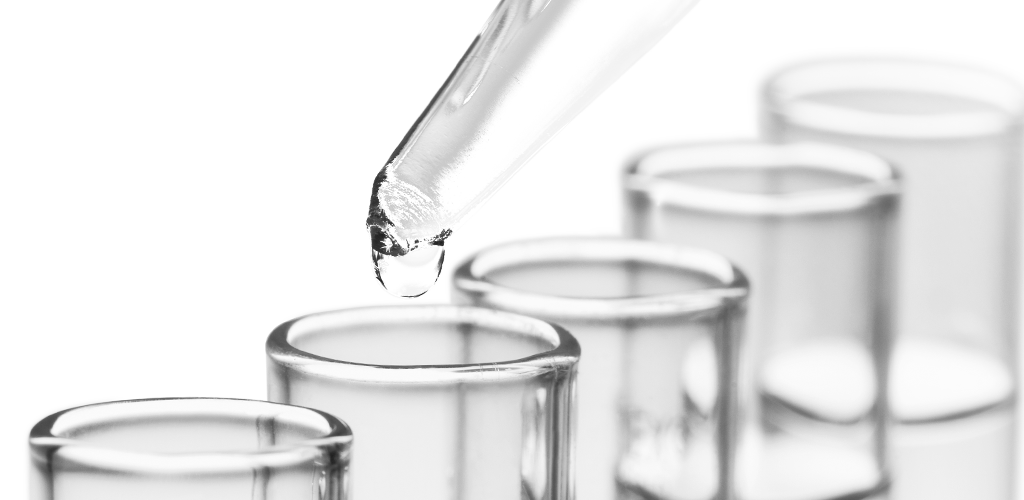Thrombin/Prothrombin
Biochemistry
| Synonym | Thrombin Prothrombin | Factor IIa Factor II |
|---|---|---|
| Molecular mass | 37 000 Da 72 000 Da | α-Thrombin Prothrombin |
| Plasma concentration | 100 - 150 µg/ml | Prothrombin |
| Half life | 72 hours | Prothrombin |
| Normal range | 70 - 130 % | Prothrombin |
Thrombin is the central enzyme of the coagulation system. The arginin-specific serine protease circulates in plasma as inactive zymogen (prothrombin, factor II) and is activated by the prothrombinase complex (factor Xa, factor Va, phospholipids and calcium ions). The procoagulant effect of thrombin is cleavage of fibrinogen into soluble fibrin monomers, which will then polymerise to form the insoluble fibrin clot. This polymerization process is catalyzed by factor XIII, which is also activated by thrombin. Thrombin also displays an important anticoagulant activity; in complex with thrombomodulin it activates protein C, which inhibits coagulation by degradation of the activated coagulation factors Va and VIIIa.
Clinical significance
In rare cases of hereditary thrombophilia mutations in the thrombin molecule can be detected, which show normal procoagulant activity, but only slight anticoagulant activity. A recently discovered mutation G → A in the 3'-untranslated region of the prothrombin gene at position 20210 leads to increased prothrombin concentrations in plasma in the majority of the affected patients which in turn leads to an increased risk of venous and arterial thrombosis.
Indication
- Suspected inherited thrombophilia
Literature
- Poort SR, Rosendaal FR, Reitsma PH, Bertina RM. A common genetic variation in the 3'-untranslated region of the prothrombin gene is associated with elevated plasma prothrombin levels and an increase in venous thrombosis. Blood 88, 3698-3703, 1996.
- Hillarp A, Zöller B, Svensson PJ, Dahlbäck B. The 20210 allele of the prothrombin gene is a common risk factor among Swedish outpatients with verified deep venous thrombosis. Thromb Haemost 78, 990-992, 1997.
- Brown K, Luddington R, Williamsson D, Baker P, Baglin T. Risk of venous thromboembolism associated with a G to A transition at position 20210 in the 3'-untranslated region of the prothrombin gene. Br J Haematol 98, 907-909, 1997.
- Rosendaal FR, Siscovick DS, Schwartz SM, Psaty BM, Raghunathan TE, Vos HL. A common prothrombin variant (20210 G to A) increased the risk of myocardial infarction in young women. Blood 90, 1747-1750, 1997.
- Simioni P et al. Prothrombin antigen levels in symptomatic and asymptomatic carriers of the G20210A prothrombin variant. Br J Haematol 103, 1045-1050, 1998.
- Martinelli I et al. High risk of cerebral-vein thrombosis in carriers of a prothrombin-gene mutation and in users of oral contraceptives. New Engl J Med 338, 1793-1797, 1998.
- Balasa V et al. The Relationship of Mutations in the MTHFR, Prothrombin, and PAI-1 Genes to Plasma Levels of Homocysteine, Prothrombin, and PAI-1 in Children and Adults. Thromb Haemost 81, 739-44, 1999.
- Walborn A, Williams M, Fareed J, Hoppensteadt D. International Normalized Ratio Relevance to the Observed Coagulation Abnormalities in Warfarin Treatment and Disseminated Intravascular Coagulation. Clin Appl Thromb Hemost. Jan(1),2018.
- Lancellotti S, Basso M, De Cristofaro R. Congenital prothrombin deficiency: an update. Semin Thromb Hemost. Sep; 39(6), 596-606, 2013.

